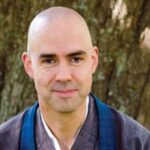There is no Buddhism without sangha. At the foundation of all of it, we have buddha, dharma, and sangha—the three things that hold up all the rest. We study the rest, practice the rest, try to embody the rest, but in these three, we take refuge. We can spend a lifetime trying to figure out what that means, and we struggle with each in different ways, but I’ve never encountered any teaching suggesting it’s a “two out of three ain’t bad” situation. They’re a set.
Still, of the three, sangha seems…complicated. Buddha is a no-brainer—whether you define it as the Buddha or as a principle of awakening, it is called Buddhism, after all. And the dharma? Even in trying to figure out who or what buddha is, you collide with the dharma. I can’t quite imagine what any of this would be without some interrogation into the nature of truth, of reality.
But sangha doesn’t have the benefit of being an abstraction or some fundamental truth. It’s concrete—we can see it. And because we can see it, we can also look away. We can just choose not to look at it at all. We can walk the other direction. (And depending on our experience of it, walking away might be exactly the right thing to do.) It’s not that sangha is optional—we’re always in relationship to it, somehow—but it does involve choices, and those choices can be complicated.
When we fail to take up the creative work of sangha, it becomes like stagnant water, an incubator for the most pernicious elements of the culture. Privilege, racism, sexism, the politics of secrecy — they all seep in, bloom, and turn to poison.
The other thing about sangha is that it’s messy. It’s the one jewel we make; it’s also the one jewel we can really screw up. And we’re human, so we do. When we enter community, we consciously bring our best selves, our highest spiritual aspirations, everything we know about the tradition. And at the same time, we sneak in all the stuff we wish we wouldn’t: our short tempers, our biases, our cultural conditioning, our desire to make things just so.
We never completely break free from that. True story—when I lead long retreats, about a fourth of the people who come to me for dokusan are there to complain about someone else’s snoring. That’s comical, but it’s also just a snapshot of who we are: ordinary human beings trying (and usually failing) to do whatever we think an enlightened person should. The sangha, then, is an organism composed of all those hopes and confusions, always in motion, always in flux.
That messiness, in my opinion, is the juiciest part of the practice. The Buddhist sangha (understood as the line of monastics) is one of the oldest continuous institutions in human history, but each individual sangha, each coming together of practitioners, is a pop-up, an experiment. A few people get together in a room (or on Zoom, or whatever comes next) and collectively answer the question, what do buddha and dharma look like right here, as us? In the same way that we can better appreciate our lives knowing we’re going to die, we understand what sangha is in part by knowing it has to change.
This issue of Buddhadharma is about that change. “What Is the Future of Sangha?” may sound like we’re providing answers, but our authors aren’t prognosticating. They’re embracing change. If sangha really is just us, then we can change it on purpose—just as we can change ourselves.
For 2,600 years, sangha has been the place where we dive into the dharma, where we try on being a buddha. It’s also been the place where we lose our way. When we fail to take up the creative work of sangha, it becomes like stagnant water, an incubator for the most pernicious elements of the culture. Privilege, racism, sexism, the politics of secrecy—they all seep in, bloom, and turn to poison. Embracing change means keeping the water moving, purifying it. And to do that, we have to swim. That means facing those poisons in ourselves, as the practice, and confronting them in our fellow practitioners. It means diving to the bottom, and it also means knowing when we need to take a breath. It’s hard.
As I read through this issue, I feel grateful for what we, as a community of practitioners, have inherited. And I also feel challenged by the work before us—work that is there not just because we live in this place or this time, but because this is the practice and it always has been. There is no way around sangha. So what can we make of it?

